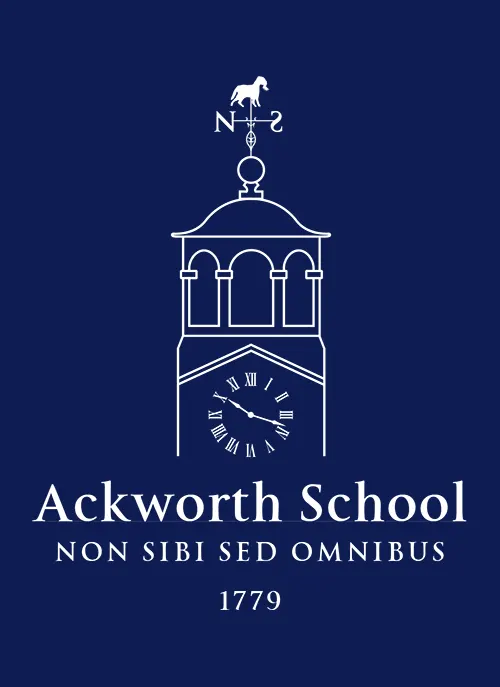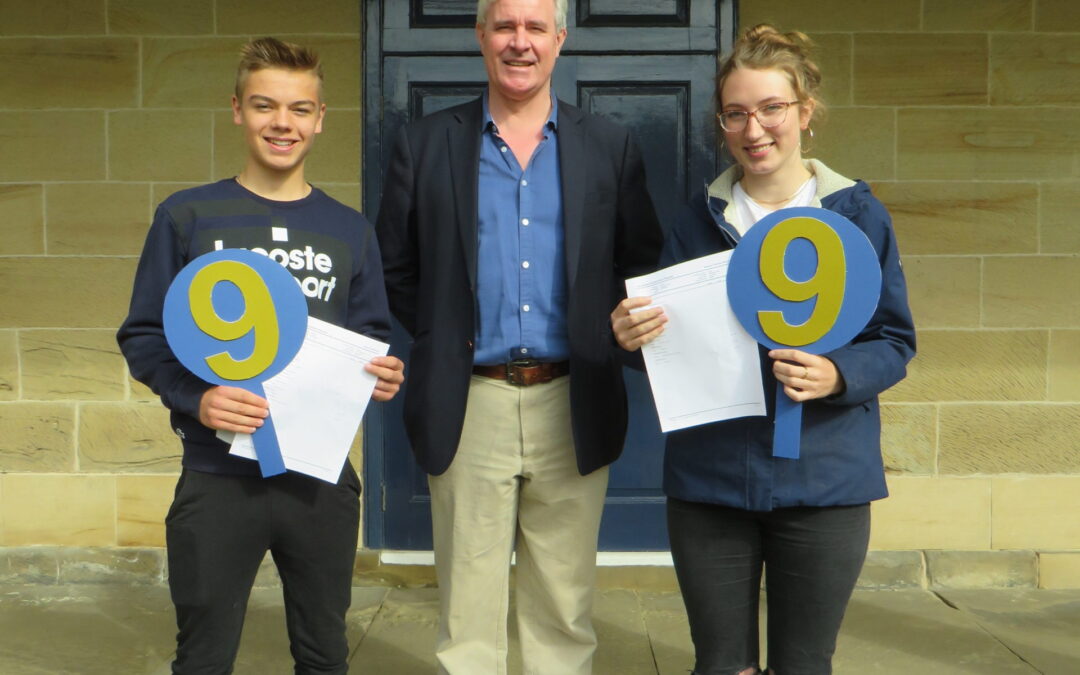
Aug 22, 2019 | Ackworth School, Senior School
The Head of Ackworth School, Anton Maree, said he is very proud of their GCSE pupils as the school recorded its best-ever number of top grades.
This year, Ackworth School’s GCSE pupils scored more 8-9 grades, with 94.7% A*-C grades, compared to 2018. More than half of our pupils achieved grades 9-7 (51.6%).
71.3% of pupils achieved 9-6 grades (A*-B).
Click here to see our full results.
There were outstanding performances from Eleanor Morris, who achieved nine grade 9s and one grade 8; Harry Dean, with eight grade 9s and two grade 8s; and Joshua Dawson, with eight grade 9s, one grade 8 and one grade 7.
“This excellent result is in spite of the tightening of grade boundaries, particularly at the top end where 9s are very hard to achieve,” said Anton Maree.
“Many of our pupils have secured top grades, and all of them have been stretched and challenged very successfully at our school.”
94% per of pupils who received their A-Level results last week had secured their choice of university, with many going to The Russell Group, which represents the 24 leading universities in the UK.
Anton Maree said that Ackworth School had pupils from all over the world and he was delighted that so many of them had improved upon their predicted grades.
“Our teachers stretch and challenge all according to their ability, and what matters most is that pupils achieve what they are capable of. So many have done that today and embark upon their Sixth Form courses with the confidence to achieve what they have set out to accomplish.”
Ackworth School enters all of its pupils as internal candidates, contrary to claims that independent schools make weaker students take exams as ‘external candidates’ to protect their league table standings.
Ackworth School is not a selective school, and we are proud of our ability to add value to our pupils’ performances.
Congratulations to all our GCSE pupils on your results!
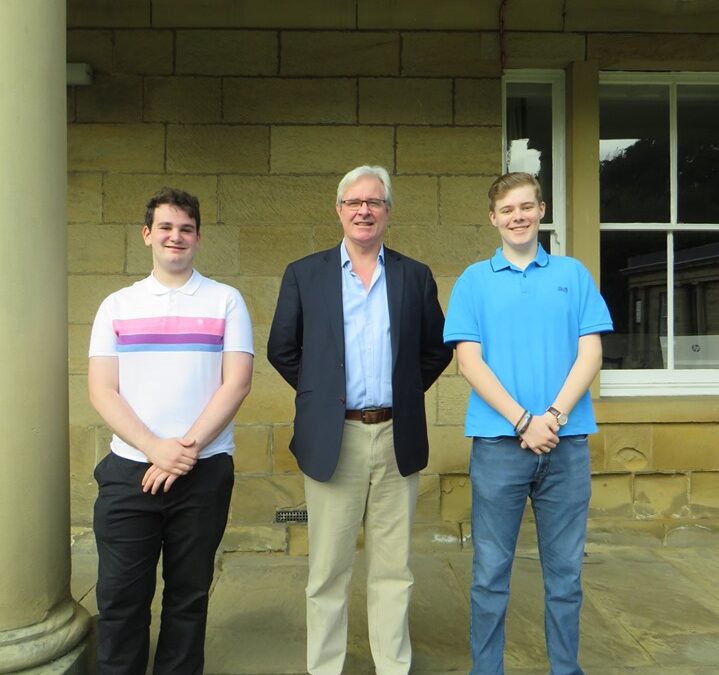
Aug 15, 2019 | Ackworth School, Senior School
The overall pass rate for Ackworth School A-Level pupils was 95% and we are very proud of our leavers as they look to a bright future. Our pupils have good reason to celebrate today having achieved a good set of results in the 2019 A-Level exams. 15% of pupils received A*-A grades and 43% A*-B grades.
95% of our pupils achieved an overall pass rate and results were particularly strong in the Sciences again with a pass rate of 96% and in Art and PE where every pupil achieved A*-B.
Click here to see the full results.
Several of our pupils did very well, achieving A*s and As, Roy He achieved one A* and two As and Olivia Howden achieved three As, but we are also proud of those pupils who had to work very hard to achieve a pass.
Commenting on the results, Anton Maree, Head of Ackworth School said: “These results reflect the hard work and commitment of our pupils, parents and staff who have supported them. Ackworth has never been a selective school but our results are consistent. We encourage all of our pupils, who come from many different backgrounds, and several different countries to do their best in everything they set out to achieve.”
94% per of pupils who received their A-Level results last week had secured their choice of university, with many going to The Russell Group which represents the 24 leading universities in the UK.
Some of the leaver University destinations include University of Edinburgh, University College London, University of Leeds and the Royal Northern College of Music, Manchester.

Jul 5, 2019 | Ackworth School


Viren (centre) pictured with Michelle, Matron of Boys’ School House, and other Ackworth School pupils.
I started my boarding experience at Ackworth in September of 2018. I joined the school because it was the first year of the football academy and it was something that really appealed to me.
I met Michelle Walker (a.k.a. Matron) on my first day and after that encounter I knew that the boarding experience at Ackworth would be perfect for me. She was very kind and welcoming and made me feel like I belonged in the boarding house. She was always there in the morning if I needed her and was always there after school as well to make us cheese toasties and other amazing snacks to ensure that we were always well fed.
She was like a mother figure to me at school. Throughout the months I spent here, I made lots of good friends through football and through school as well. These are people that have been there for me through my ups and downs and are friends that I’ll keep for life. I’ll miss them a lot and everyone at Ackworth will always have a special place in my heart.
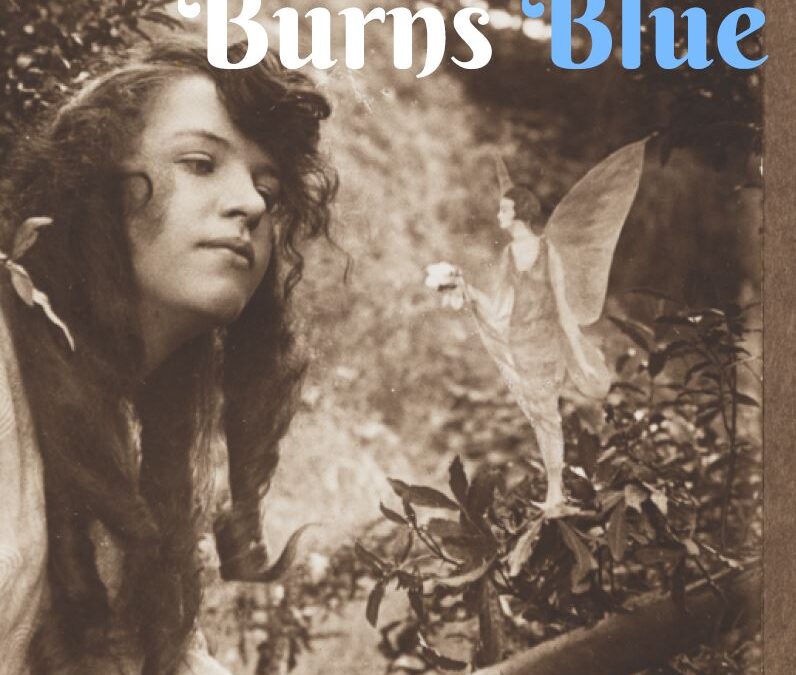
Jul 3, 2019 | Ackworth School

Dominic Sanderson, an old scholar and winner of the Ackworth School Drama Trophy wrote a review of the Junior Production The Light Burns Blue.
When I went to see the junior production of ‘The Light Burns Blue’ directed by Mr Boucher, I wasn’t sure what to expect as this is not a massively well-known play and I myself wasn’t aware of its existence. It is set during WW1 and tells a story of a young Elsie Wright who tricks people into believing that fairies exist due to the supposed photographs she has taken of them. However, a reporter attempts to expose the truth about Elsie’s deceitful behaviour but in the end realises that her act was not out of malice. The way that this production was acted and staged captured my attention, so much so that I decided to read the play for myself which has enlightened me further to its intricacies and challenges. For such a young cast, I think they certainly overcame these challenges and put on an impressively staged performance.
I had heard prior to seeing the performance that it was originally going to be staged in Great Gardens. Viewing the performance in a naturistic setting such as this would have effectively brought the audience closer to the land of the fairies and also added an element of playfulness to the scenes in which people are attempting to look for and capture the fairies, such as scene 18 where Clarence Johnson leads a group through the woods in search of the fairies. It was unfortunate that the weather couldn’t allow the play to take place there, but it was still a clever idea nonetheless and didn’t subtract from some of the other skilfully staged scenes. As I was reading the play, there was one line that I read that took me right back to how one of the earlier scenes was staged during the performance: ‘I know my missing child is safe with the fairies.’ It was the soldier scene (scene 10) as a group of soldiers read out their wills; each soldier was placed at the corners of the stage and after they had read out their wills, the rest of the cast surrounded each individual soldier, almost forming a protective barrier around them. Although they were meant to represent the family of the soldiers, to me, their movements were quite fairylike and could have easily represented the protection of the fairies that would mean the soldiers were ‘safe with the fairies’. This was probably my favourite scene to see staged, not only because of how intelligent and thought-provoking it was, but also due to the way it made the fairies seem hidden but at the same time exposed right in front of the audience – very effective. I’d say the most taxing scenes to stage were the ones where there was a lot of transitioning from one scenario to the next. In scene 2, for example, the action starts in the church and then swiftly moves to a bakery, a shop, a farm, to the village common and then finally to the high street. It seems quite easy to complicate a scene such as this but the way that it was staged in this instance, with the cast forming an arc around the stage and cast members stepping forward seamlessly into their scenario, communicated the scene with clarity.
Overall, the general quality of the acting was superb for such a young cast attempting a play such as this. There is obviously some great potential for these actors to pursue a career in the world of drama and I would definitely encourage this. My advice for the cast members for future productions would be to develop their own self-confidence, as at times lines were lost due to lack of projection and rushing through lines to get them over with quickly. This wasn’t too much of a hindrance and in all fairness, they are only very young, and their confidence will inevitably grow. The acting I paid special attention to was the interaction between Elsie Wright (played by Ella) and the reporter Winifred Douglas (played by Emily) as they have a complex relationship. On the surface, they appear to be enemies as Winifred is trying to prove Elsie to be a fraud; the costumes for this production highlighted this, with most of the cast, including Elsie, wearing a maid’s apron but with Winifred wearing a tailored blazer. These juxtaposed costumes effectively showed the opposition between them and how they are completely against each other. Nevertheless, in reality these characters have the exact same aims in the play and share more in common than we first think – the way the actors interacted during this production certainly showed this. In scene 3 and scene 24 (which is two halves of the same scene), the two actors showed how these characters are very interchangeable; in scene 3, Winifred holds the power as she intimidates Elsie by walking around her whereas in scene 24 the roles are reversed, and Elsie is the one walking around Winifred. This was an effective way of communicating to the audience that there is no dominant character between them and as the play went on it becomes more obvious that actually they are both creative people and both want to tell their own versions of the truth.
All in all, I really enjoyed watching this production and thought that the way Mr Boucher had staged it was clear and clean but also very thought-provoking. Furthermore, I also give credit to the young cast who did an excellent job at communicating the tough ideas that can be associated with this play.
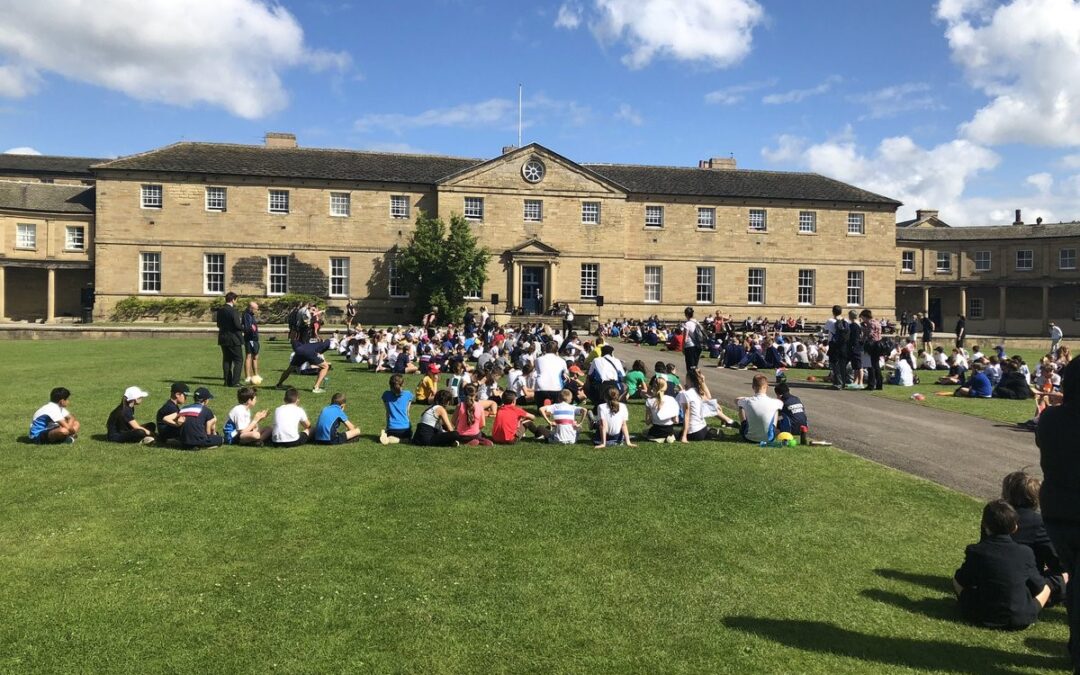
Jul 2, 2019 | Ackworth School
Today we have had the pleasure of welcoming 276 pupils from 10 local primary schools on to campus to participate in the 2nd Annual Ackworth School Olympic Day, a multi-school sporting event sponsored by the Tim Henman Foundation. Across the day, the children were split into mixed school groups to compete under the banner of one of 18 countries. These countries represent the diversity of student backgrounds at Ackworth School.

The Official Opening of the 2nd Annual Olympic Day
The day kicked-off with an official Opening Ceremony, at which flag bearers lead a procession from the school Green down to the sports fields, and torchbearers carried torches made by Ackworth School First Form pupils (Year 7). The children were split into mixed school groups to compete under the banner of one of 18 countries. These countries represent the diversity of student backgrounds at Ackworth School. Speeches were made by theHead
Olympic Activities
The multi-skill activities that pupils were involved in were accessible to all regardless of skill, level, or individual needs. The events included: foam Javelin throw into different zone distances; agility ladder relay races; kicking a football to a goal; cricket wicket throw over different distances; obstacle course; tennis target (led by Ackworth School tennis coach, Alice Robson). Pupils were awarded points in each activity which were then tallied into a leader table. The top three country teams were then awarded with Gold, Silver and Bronze certificates.
Ackworth School students were involved in running the event, explaining to the country teams what to do at each station, scoring points, and leading each country around the event, encouraging pupils to use different leadership, communication and organisational skills throughout the day.
Special thanks to our local primary schools
The 10 local primary schools which participated in the event are: Ackworth Howard School, Grove Lea Primary School, Larks Hill Primary School, Streethouse Primary School, South Kirby, Coram House (Ackworth Junior School) Walton Primary Academy, Darrington Primary School, Badsworth Primary School, and Fitzwilliam Primary School.
Sponsor Information
The Tim Henman Foundation has generously sponsored the 2nd Annual Olympic Day event, including providing transport to and from all pupils’ school. To date, Ackworth School’s partnership with the Foundation has:
- provided digital technology in the school’s autism resource,
- sponsored a Syrian refugee,
- provided funding for a community tennis coach,
- sponsored tennis and table tennis equipment that has been distributed to primary schools across West Yorkshire.
Comments from the Head
Anton Maree, Head of Ackworth School said, “Without the support of the Tim Henman Foundation it would be impossible to provide opportunities like this Olympic Day for the thousands of children we support at our partner primary schools across the county.
“Ackworth School is perfectly positioned to hold important events like these, making a difference to children from local communities. Olympic Day is a fantastic day for these pupils to try their hand at a variety of sports and activities, hopefully igniting an interest which may one day lead to participation in the real thing.”
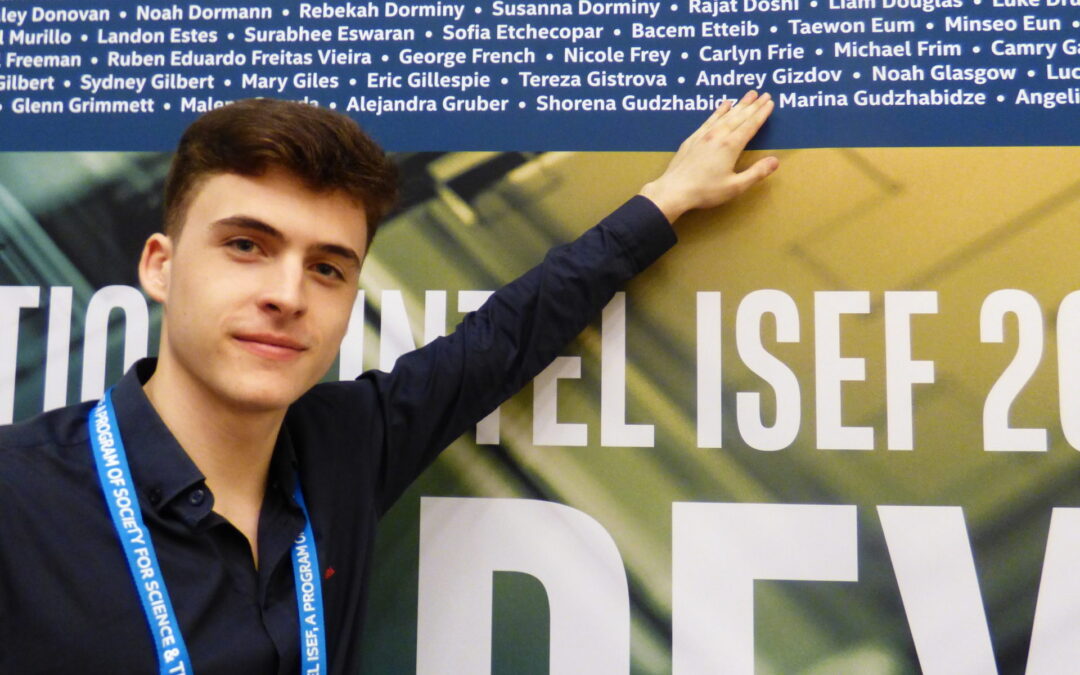
Jun 28, 2019 | Ackworth School
In March, Andrey qualified to represent the UK at the world’s largest science and engineering fair held in Phoenix, Arizona last May. Along with 1800 finalists coming from over 80 countries, Andrey demonstrated exceptional knowledge and presentation skills about his project in the category of computational biology. He managed to win the International Science and Engineering Award supported by the University of Arizona, which provides him a scholarship to continue his study there. The award seeks to promote use-inspired projects that demonstrate the practical application of technology and scientific knowledge towards creating a meaningful change in the world of science.

His work was also published by Science News for Students, a world famous feed for science throughout the student community. Link to the article:
https://www.sciencenewsforstudents.org/blog/eureka-lab/ISEF-2019-new-forensic-technique-better-gauge-age-death

